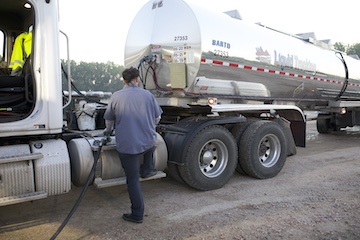Winter weather can cause all sorts of headaches for transportation companies. Blizzards and ice storms can shut down highways, making it impossible to move goods from one place to another. Even in less severe weather conditions, winter can present unique challenges for liquid haulers. One of the biggest problems is keeping the liquid in a safe temperature range.
One commonly used solution to this issue is the use of in-transit heaters. These devices provide heat to the interior of the tanker, keeping the liquid at a safe temperature and preventing the product from solidifying.
Temperature control is crucial in industries like food and beverage, as well as chemicals and petroleum. Without proper temperature regulation, the product being transported could spoil or even become hazardous. These advanced systems ensure that the liquid arrives at its destination in optimal condition.
In addition to protecting the cargo, in-transit heaters can also save money by reducing the need for rerouting or emergency offloading of frozen liquids. However, it is important for haulers to properly maintain these heaters and monitor temperatures to ensure they are functioning correctly and effectively.
How does it work?
To the everyday driver, liquid tankers may look simple on the outside but the inside is a sophisticated system that regulates the temperature of the product being hauled.
The temperature inside the tank is controlled by a series of valves and pumps that circulate coolant throughout the tank in order to maintain a consistent temperature. This is crucial in ensuring that the liquid being transported remains in its desired state, whether it be in a liquid or even gas form.
It’s important to remember that in transit heat is used to maintain product temperatures, not heat products. If you find that your product has cooled off past it’s melting point, you can go to a tank wash where they can provide a steam or coolant system to help melt the product.
Benefits
In transit heat plays a crucial role in the transportation of chemicals with lower melting points. Without it, these substances run the risk of solidifying during shipment, potentially causing delays and additional expenses. Using in transit heat allows for efficient and cost-effective transport in all seasons, especially in the winter when temperatures are cooler. The necessary equipment for in transit heating is readily available and can easily be incorporated into chemical transport processes.
Overall, liquid transfer trucks are a complex system designed for efficient transportation of delicate products. Take a few minutes to refresh your memory on the set up of your trucks in transit heat system with our helpful youtube video HERE.
